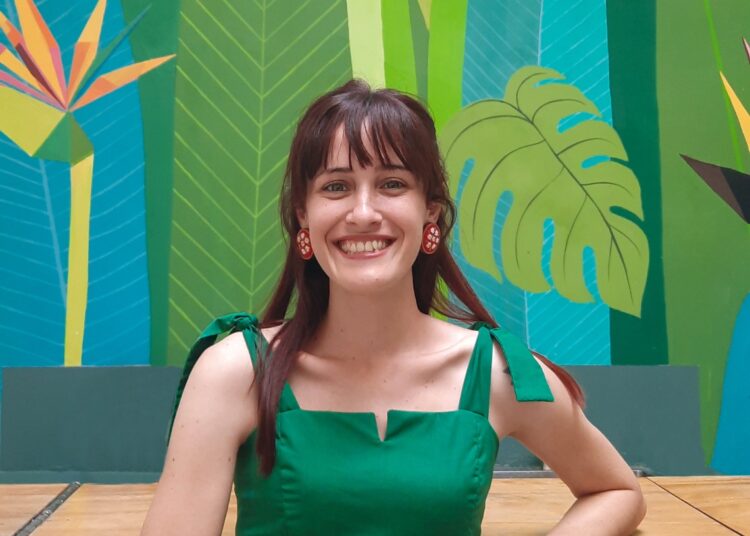María Paula Otero Herrera’s days go by between shavings and bowls where the pulp that will later be transformed into paper rests.
Born in Santa Clara, she was connected to art since she was a child, primarily through music, a discipline in which she graduated in 2018 from the Higher Institute of Art (ISA, now the University of the Arts). Although she began her professional life as a musician, it was during the pandemic that the texture of handmade paper replaced the rhythm of the metronome.
“Confinement led me to rethink many things. I felt the need to do something from home that would fulfill me and, at the same time, be economically sustainable. That’s how I discovered handmade paper,” she told OnCuba.
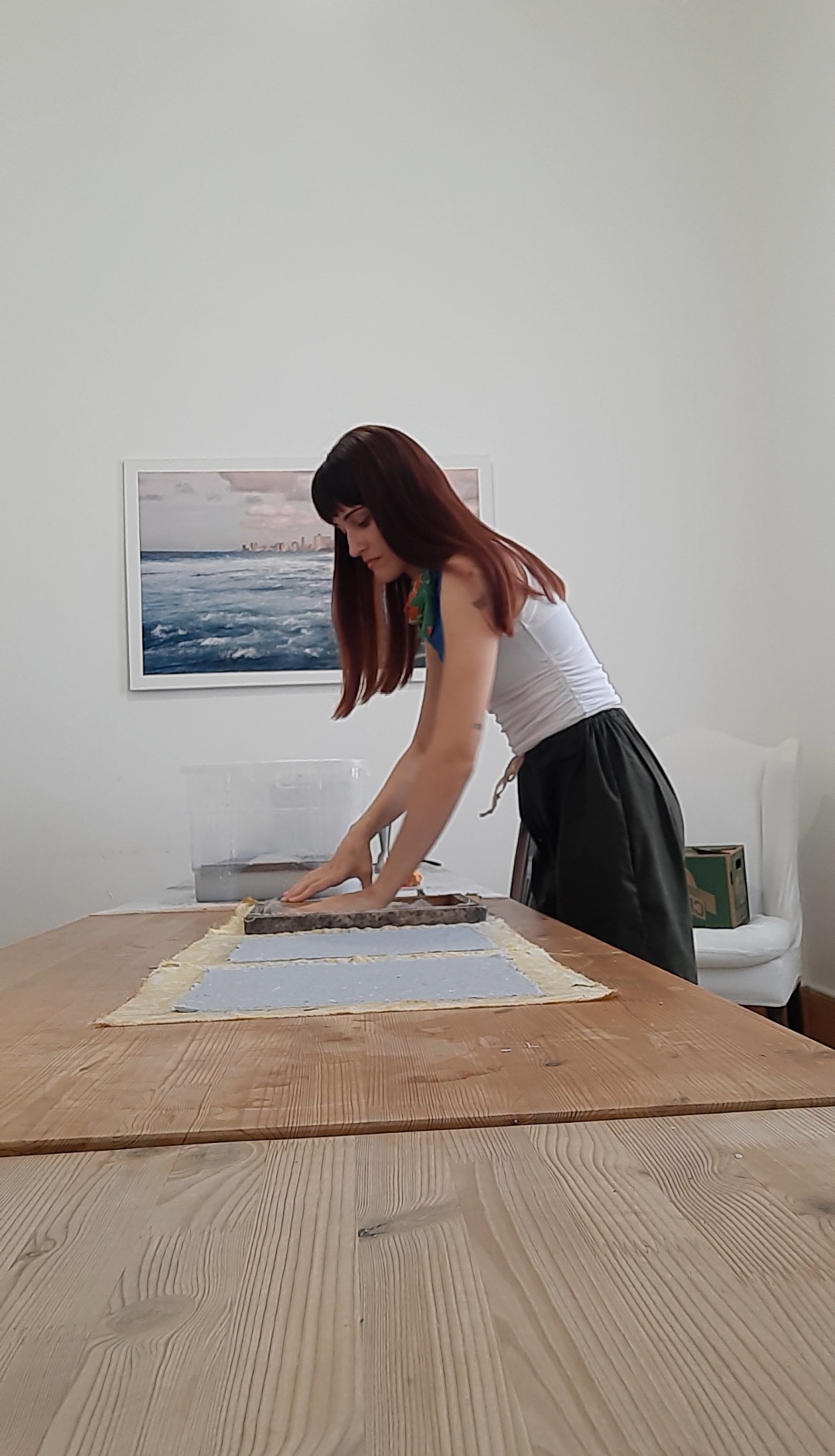
Fascinated by the process and encouraged by her surroundings, she began experimenting with textures, colors, leaves and seeds. Thus, Pau Papel was born in late 2021, a project linked to recycling and sustainability from the start.
In 2023, she also founded the hand-embroidered jewelry project Pau Complementos with her mother. “Embroidery has always been present in my life; I learned it by watching the women in my family with needle in hand. I wanted this venture to be a gift for my mother: together we create embroidered garments, made with great care and dedication.”
Bookmarks, hand-stitched artisanal notebooks, cards and menus for small businesses, and a charming collection of embroidered jewelry make up the offers of Pau Papel and Complementos, two soulful businesses that María Paula and her mother are trying to grow.

From the workshop to the detail
María Paula’s ventures are based on a counter-current market philosophy: each piece is created by hand using a completely artisanal and meticulous process that requires time.
Using recycled paper, water, a blender and a mold, she creates sheet by sheet, sorting the raw material by color and type. To each mixture, she can add natural dyes, leaves, dried flowers or fibers such as those from coconut or sugarcane.
“The paper is air-dried and then pressed. I like to show that reused materials can produce beautiful and valuable results,” she says.
At Pau Complementos, artisanal craftsmanship is also at the heart of each piece. “We are interested in mixing the traditional with the modern. We want our embroidered pieces to be usable, every day, but with the value that comes with handmade work.”
Even the packaging is designed with sustainability in mind: boxes and cards are made with recycled and biodegradable paper.
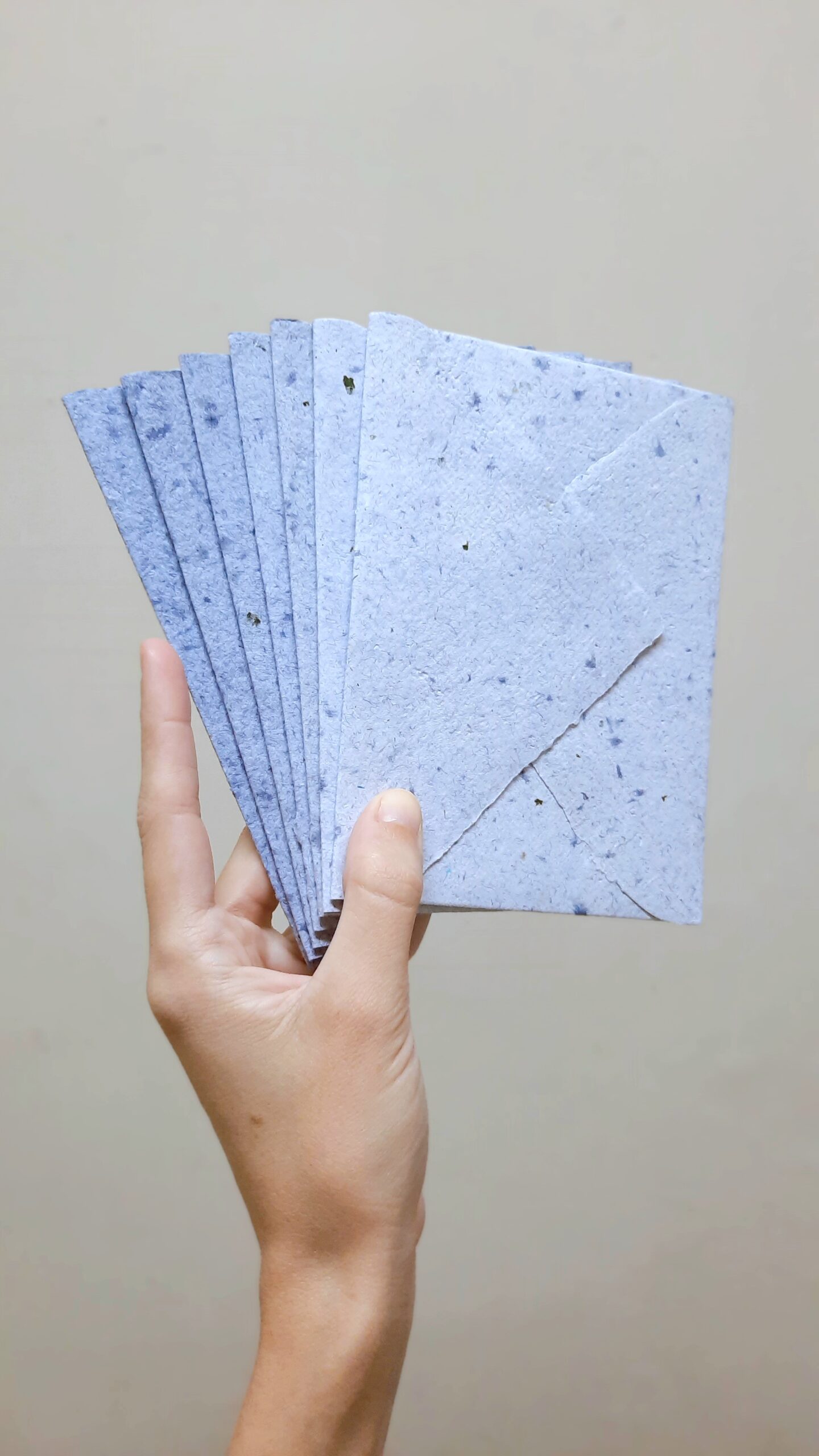
What is the manufacturing process for the handmade paper you use in your products?
It’s quite accessible and inexpensive. Using disposable paper, water, a blender and a mold, you can create a sheet of paper. I carefully select the scraps of reusable paper, shred them, soak them and process them to form new handmade sheets. Each sheet is air-dried and then pressed.
A very important aspect for me is sorting the raw material by color and type of paper, since the final result varies depending on the material used. Additionally, natural dyes, dried leaves and flowers, seeds and natural fibers can be added to add texture and detail.
How do you incorporate embroidery into your accessories and what does it mean to you?
With Pau Complementos, the idea has always been to bring a technique as ancient as embroidery into everyday life, mixing the traditional with the modern. We seek to create pieces that can be worn and have the value of having been handmade, stitch by stitch, with great care.
We work with basic stitches like stem stitch, daisy stitch and French knot, techniques passed down through our family heritage. They are the same ones our grandmothers used and that we have perfected over time.
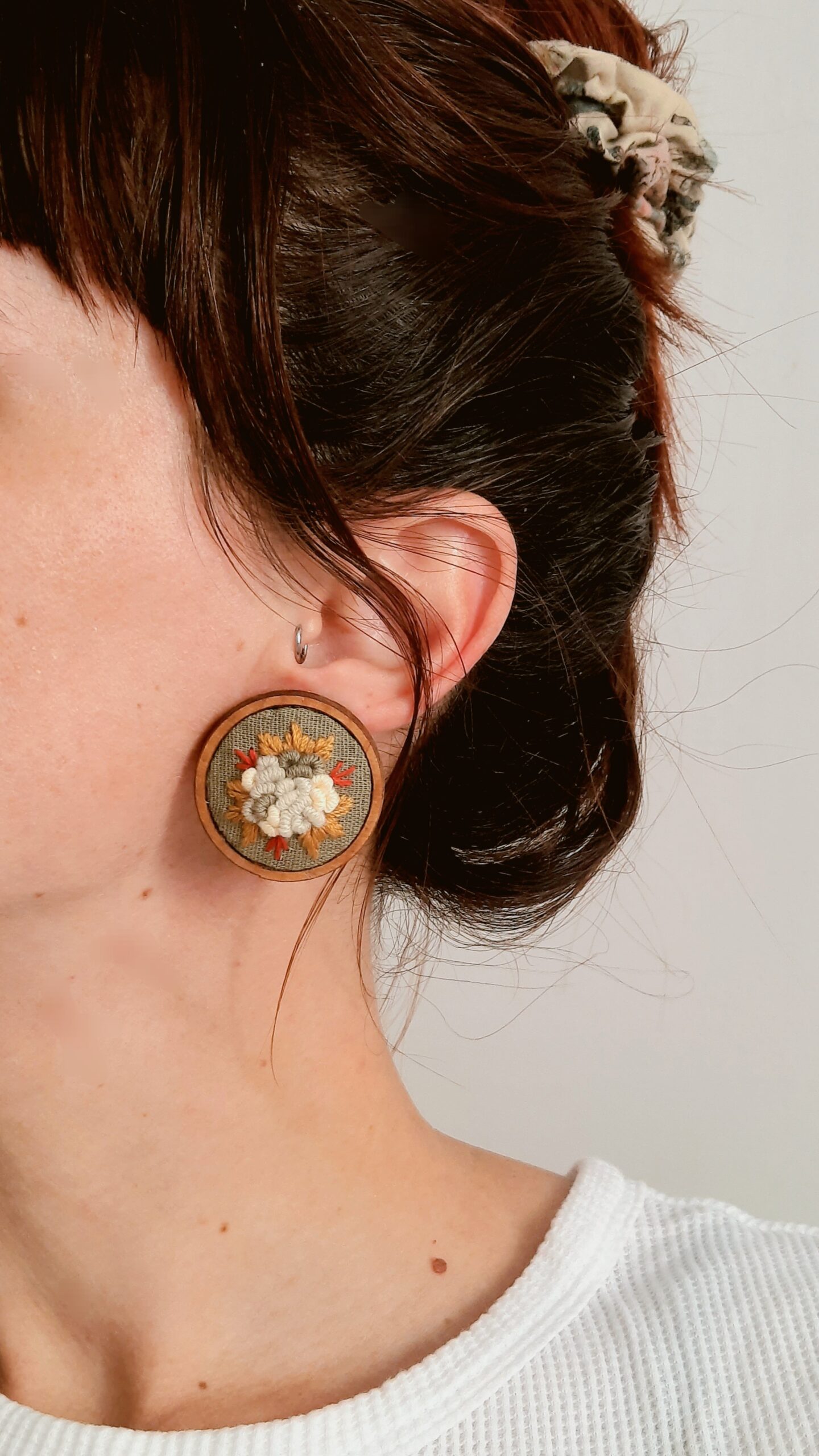
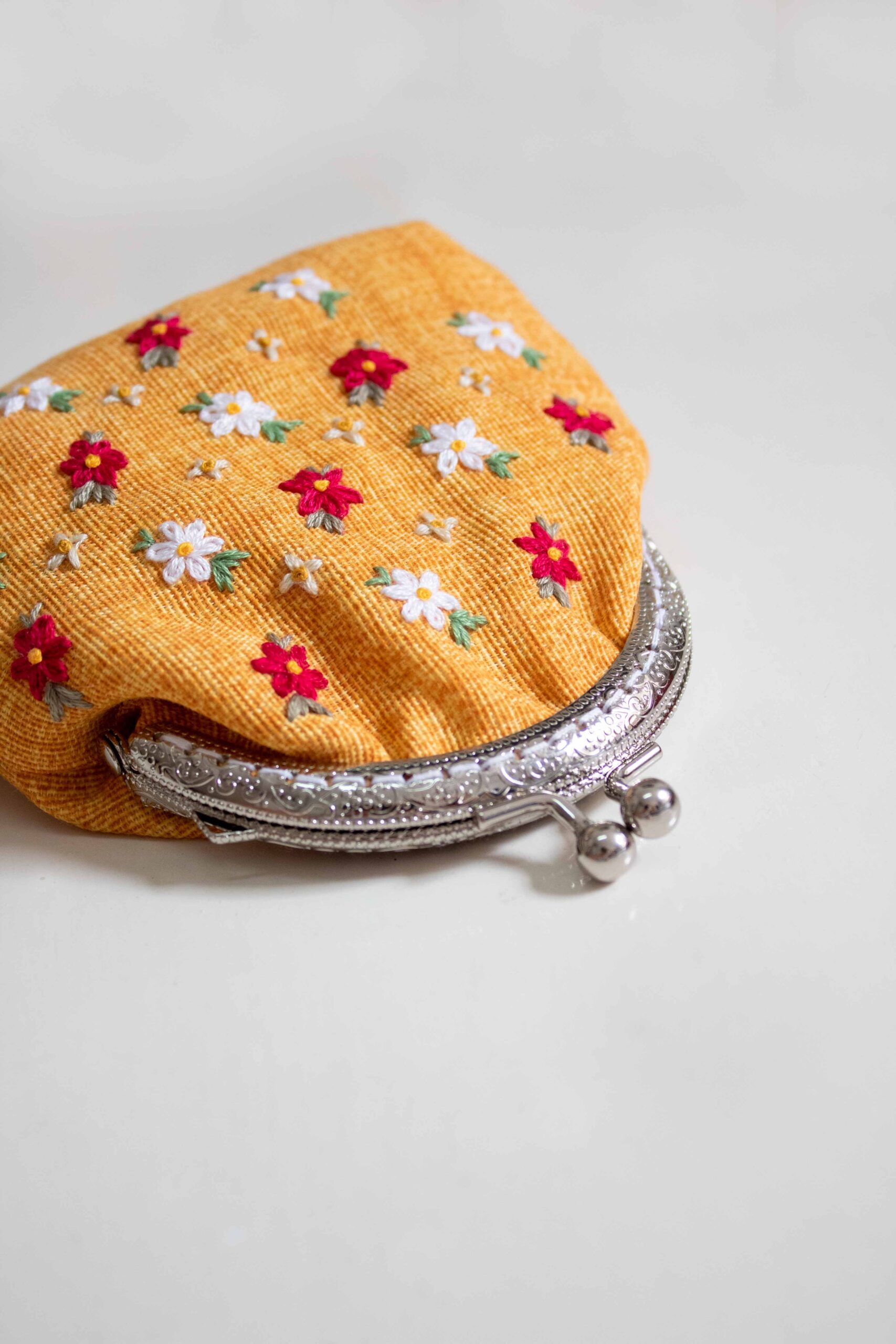
How important is the selection of fabrics and packaging to your work?
Choosing fabrics is fundamental to the process. We always try to use cotton, linen or scraps of fabric left over from other projects to extend their life cycle and avoid waste.
We similarly consider packaging, using noble materials that reduce the environmental impact. For example, our boxes and cards are made of recycled paper, making them biodegradable.
What message do you like to convey through the use of recycled materials in your products?
I like to show that using recycled materials can produce beautiful results. The appreciation of this effort and of the beauty of handmade items with an ecological conscience is something that always fills me with joy.
Where does your inspiration for the design of your handcrafted items come from?
I’ve loved design since I was little and, in my creative process, I always pay close attention to the details of nature, art and fashion. Designing a handcrafted item is about uniting tradition and trend. We seek and find references in any format, whether in a museum or on an Instagram account.
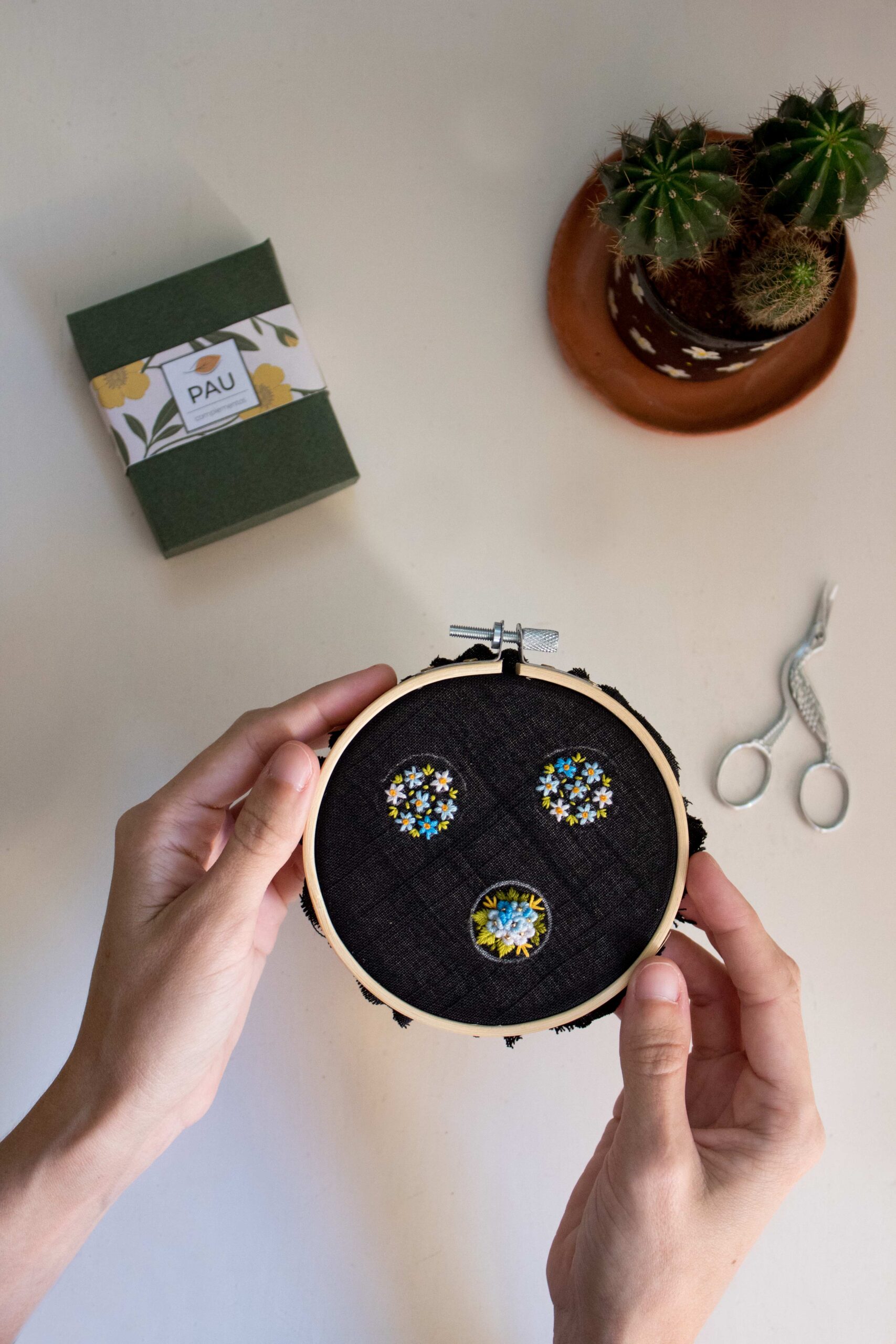
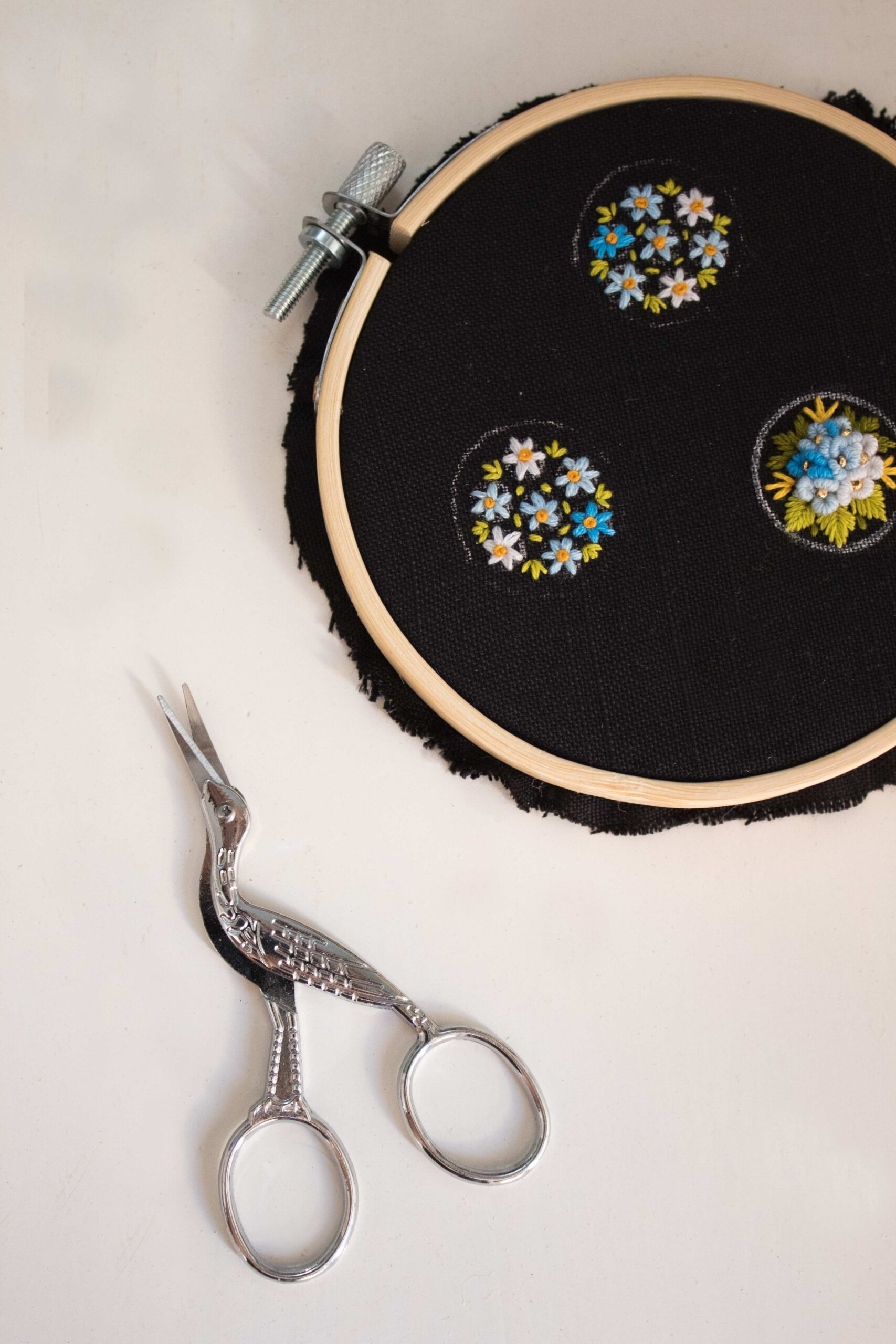
How important is color and aesthetics to you in your products?
A great deal, color and creating harmony between them. I think that everything that is beautiful and attractive is in itself functional, useful and serves a purpose. Aesthetics first impact the customer and then functionality convinces them.
How would you describe the functionality of your products, for example the notebooks?
The notebooks are beautiful in themselves, but they are also useful and durable because they are handcrafted, sheet by sheet, with that purpose in mind.
Sustainability: a commitment from the beginning
Sustainability is not only a characteristic of the products María Paula creates in her workshop, but a vital principle, the heart of her ventures. “Both projects are deeply connected to sustainability. It is possible to create beautiful, useful and meaningful things without harming the environment.”
For Pau Papel, recyclable materials are collected and the entire process is manual and free of toxic chemicals. At Pau Complementos, the small scale, the use of scraps and noble materials promote more responsible consumption.
One of their most unique products is plantable paper, made from seeds that can germinate when biodegraded. “It seemed incredible to me that something that is usually discarded, like a card, could be transformed into life. This closes the cycle of consumption.”
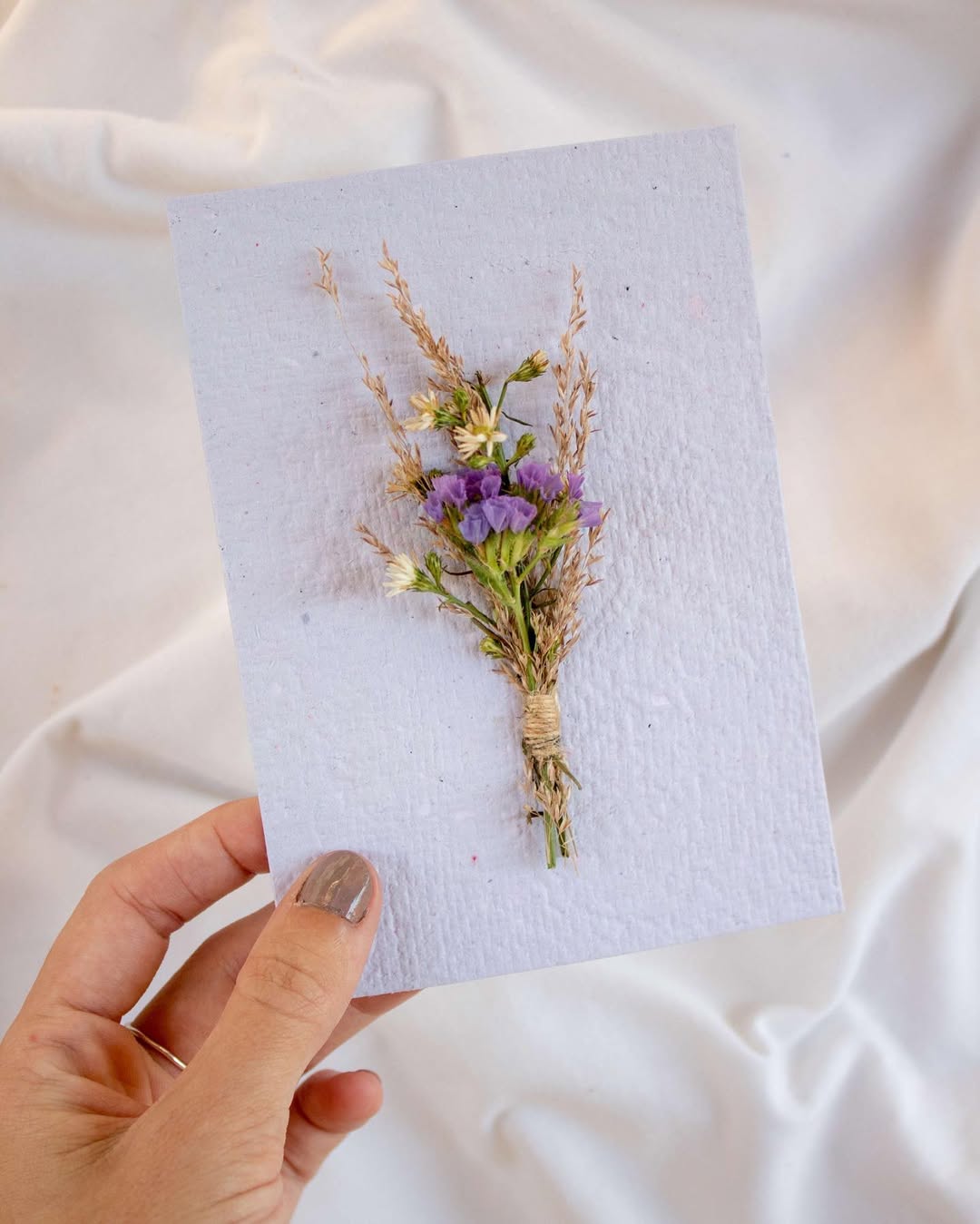
What role does sustainability play in your projects and in your daily life?
It’s an essential pillar in both areas of production, and it’s something I keep in mind in my daily life. Not only because of the way we produce, but also because of the message we want to convey.
How do you apply sustainability to your handmade stationery?
In stationery we work primarily with recycled paper, collecting materials that would otherwise be discarded. These materials arrive at my workshop through institutions such as embassies, foundations, enterprises, or clients interested in recycling. This reduces the amount of waste generated and decreases the demand for new paper, which means less water, energy and tree felling.
The entire process is manual, using traditional techniques and without toxic chemicals, ensuring minimal environmental impact.
And at Pau Complementos?
At Pau Complementos we strive to work consciously, using low-impact materials and reusing leftover textiles. Since these are handmade pieces, we produce on a small scale and avoid the fast-consumption model, promoting responsible consumption where each object has a special value due to the time and care invested in it.
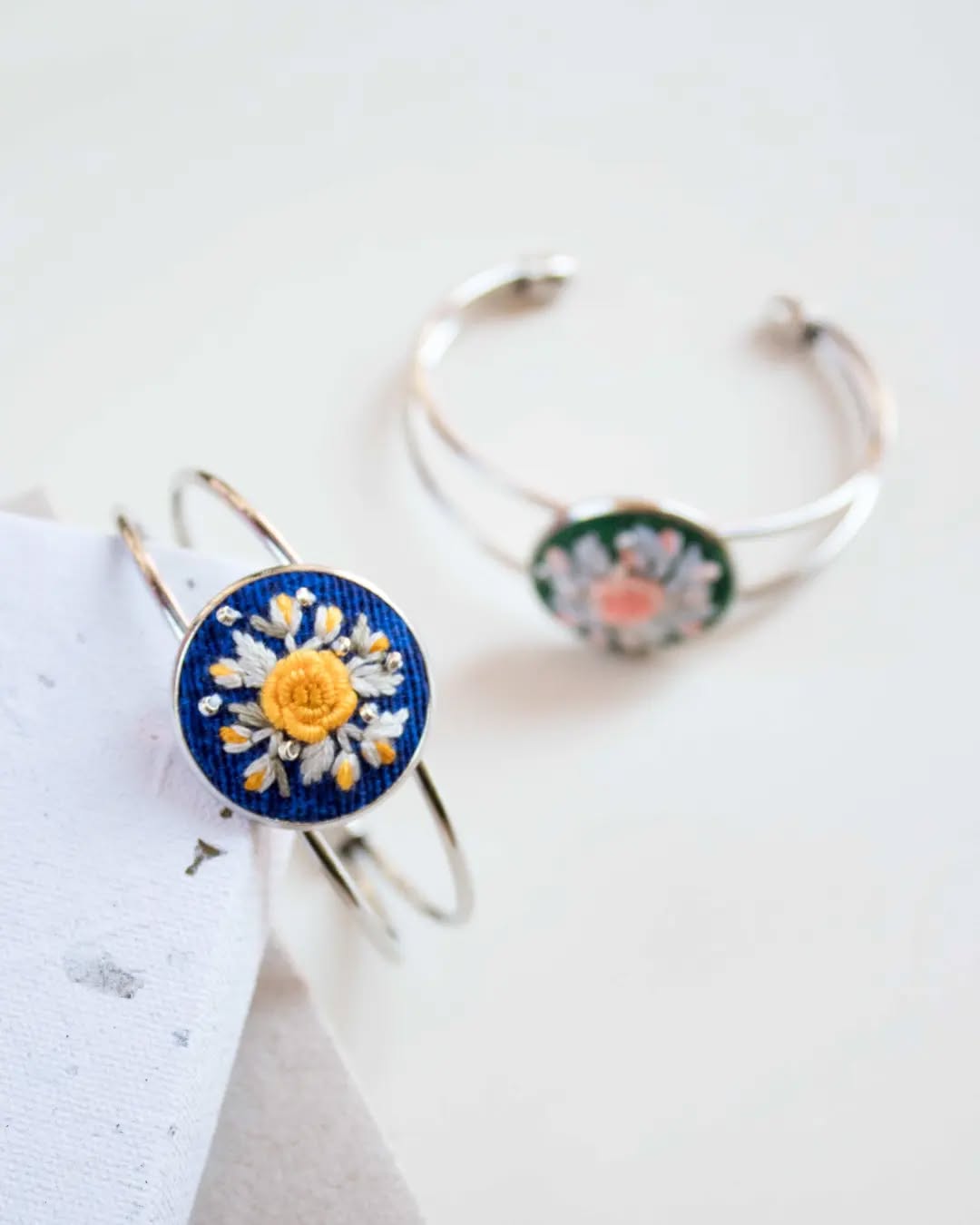
How does the idea of plantable paper work?
From the beginning I was clear that I wanted to incorporate seeds into various products. I discovered this technique and found it fascinating, since many cards or labels end up being thrown away. Thus, by biodegrading, the paper can germinate a plant and close the consumption cycle, which has a very special value.
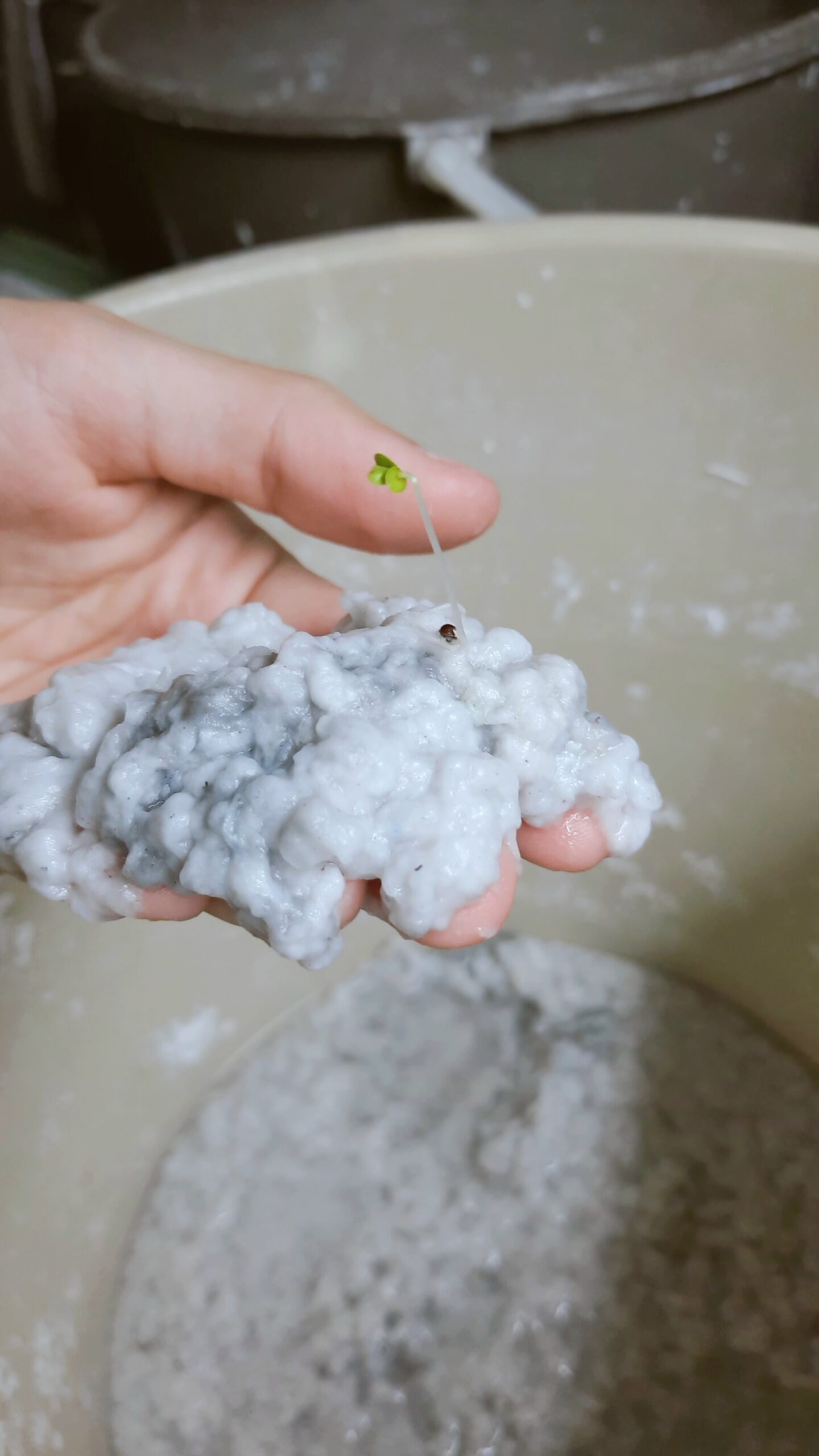
Challenges, lessons learned and persistence
Is it possible and profitable to start a green business in Cuba?
I can say that, in a way, it is possible and can be profitable, although it is very difficult and has limitations, especially to sustain itself over time given the constantly deteriorating situation in the country.
I’ve had to be very persistent and count on the support of many close people, friends and family. A wonderful community of entrepreneurs with similar interests and goals has been created, and that has greatly helped me move forward with my venture.
What have been the main challenges you’ve faced as an entrepreneur in the field of handmade stationery and embroidery?
The main challenge has been and continues to be access to materials. In Cuba, obtaining basic tools — textile materials, embroidery threads, needles, scissors, among others — can be complicated, expensive and, above all, inconsistent. This has forced us to be very creative and make the most of everything we can get our hands on.
Another major challenge has been the lack of stable access to resources such as the internet or sales and promotion platforms, which makes it difficult to make visible and market our work, especially when seeking to reach a wider audience or establish connections outside the country.
We also face limitations regarding specialized training and technical updates; I have often had to learn on my own or by sharing knowledge with other entrepreneurs.
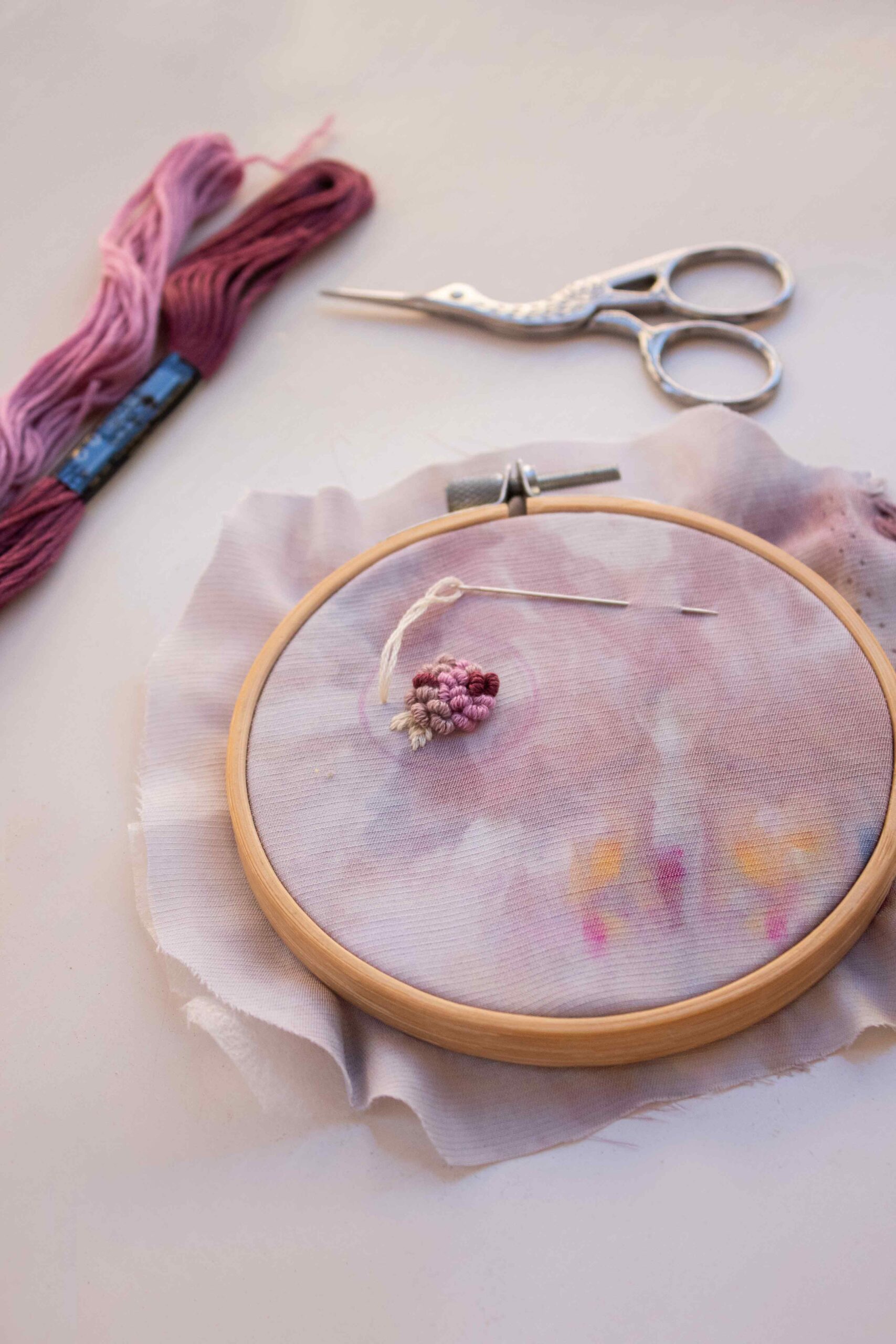
Furthermore, having sustainable projects means constantly educating clients about the value of handmade items, recycling and responsible consumption. Sometimes it is a challenge to convey why a handcrafted and sustainable product can have more value (and a fair price) than an industrial one.
But there are many rewards: creative solutions are developed; support networks are created and a commitment to a way of doing things that respects both people and the environment is strengthened.
Social media that sustain
The community has been key to the growth of both projects. “The first to trust me were my friends and family. Little by little, suppliers, clients and colleagues joined in. Alliances with other ventures have been fundamental.”
Social media, especially Instagram, has been their showcase. “Despite the limitations, it’s where I promote, interact and market. In a context where physical spaces aren’t always available, social media allows for visibility and closeness.”
How has the community influenced Pau Papel’s growth?
For a business that begins as a personal initiative, community support is essential. Friends and family are the first market to criticize, support and promote. Without realizing it, an entire structure is created that facilitates access to suppliers, materials and clients.
Furthermore, alliances with like-minded businesses form a community that disseminates, validates and supports what we do, not only as consumers, but also as allies, colleagues and followers. This creates a much more human and intimate relationship.
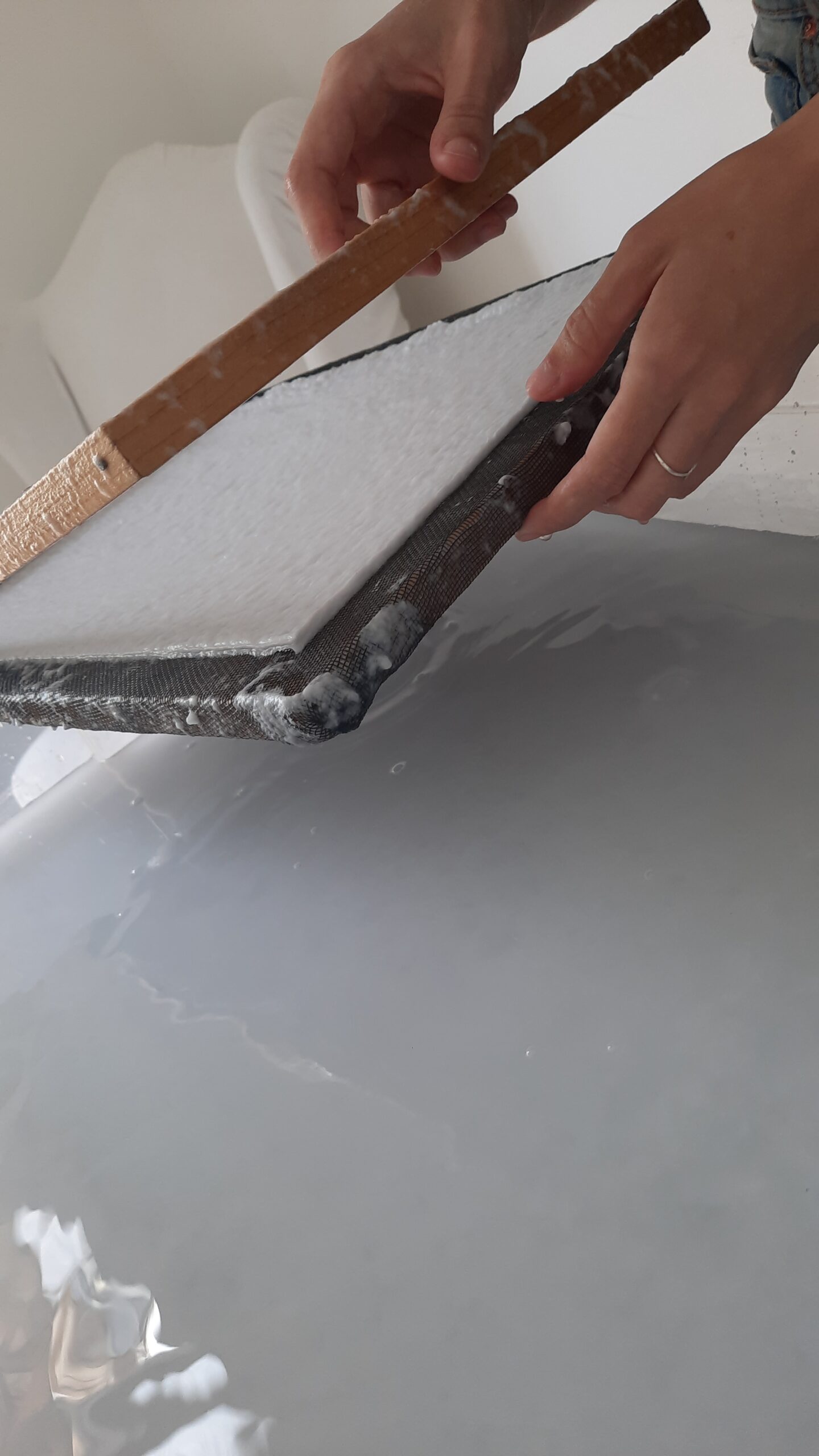
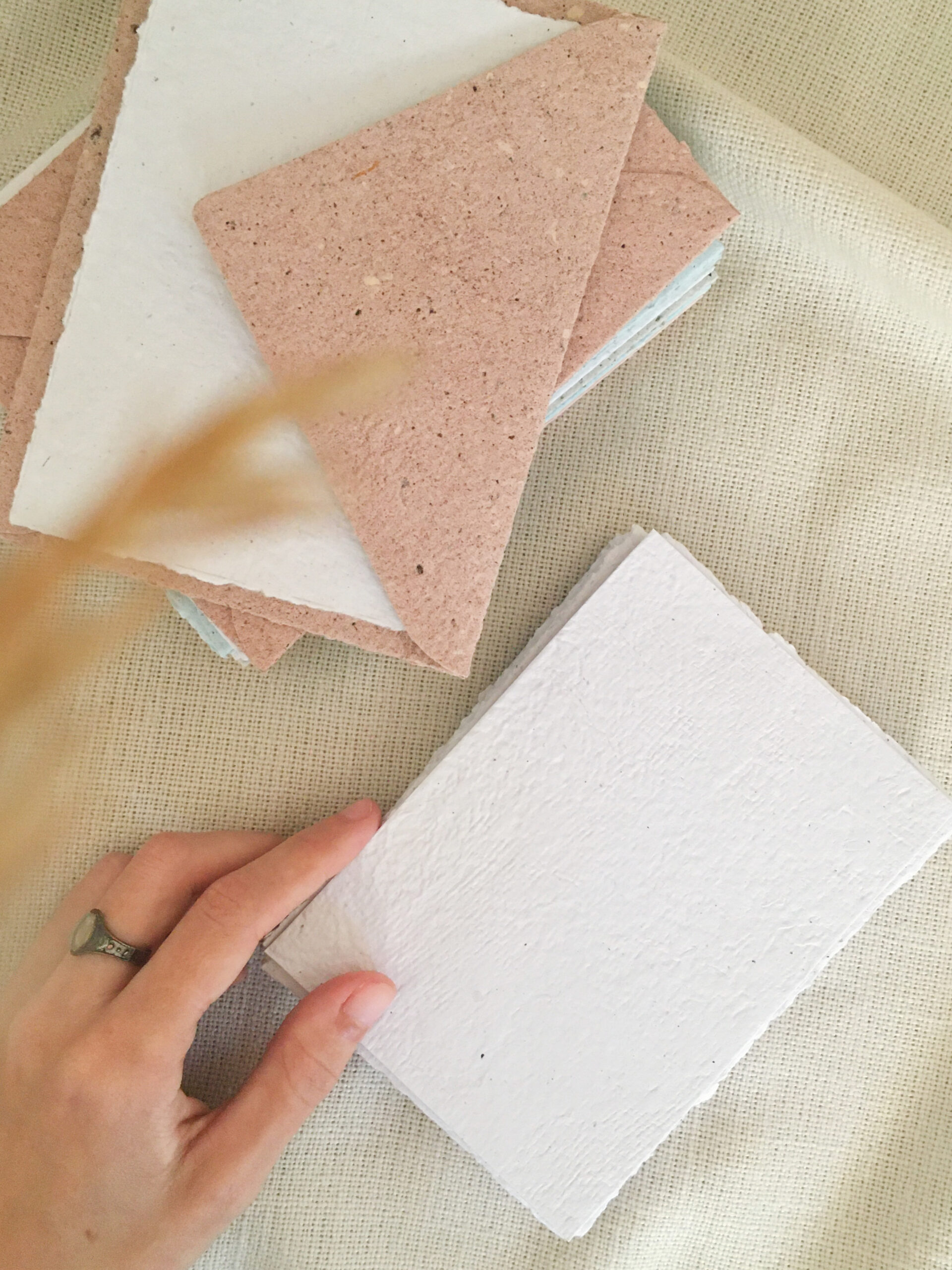
Looking to the future
María Paula’s plans for Pau Papel and Pau Complementos include continuing to diversify products, increasing their audience and exploring new markets, both inside and outside of Cuba. “I would love to teach workshops, not only on handmade paper, but also on bookbinding and embroidery. It would be a beautiful way to share what I’ve learned,” she says.
Do you have any advice for those considering starting a business in the field of crafts or sustainability in Cuba?
Don’t be discouraged if everything seems slow or complicated. All processes take time, so you have to focus on what you want, educate the community about the values you want to convey, and the rest will flow.
If I’ve learned anything, it’s that we often have to invent, adapt and learn by doing. But there’s also a supportive community that values authenticity and seeks respectful, responsible and approachable alternatives.

